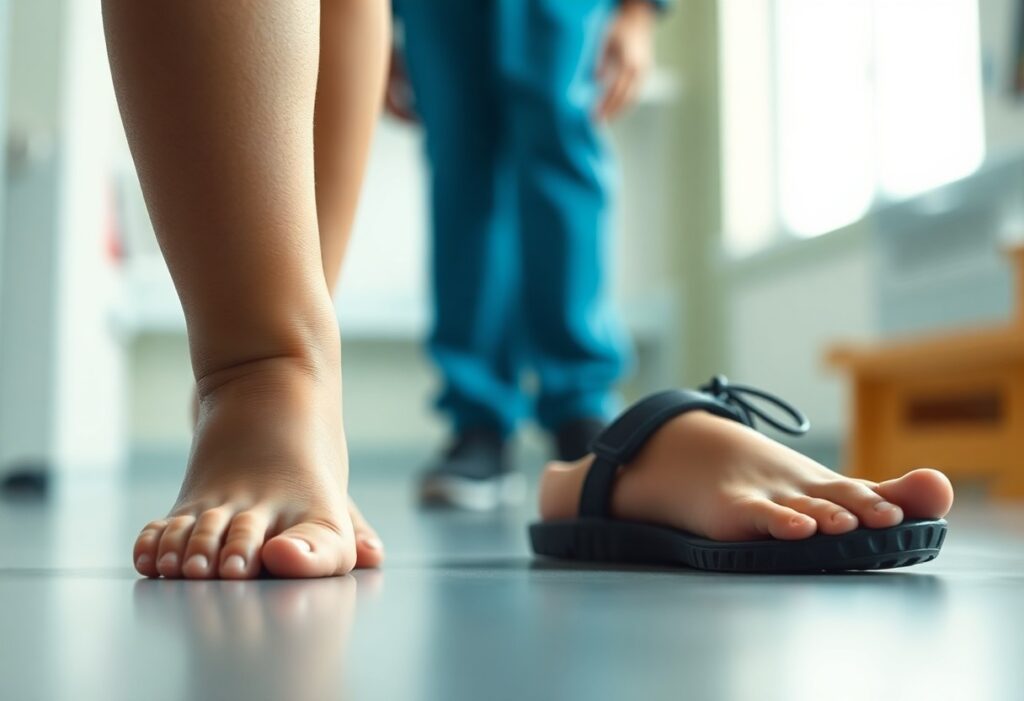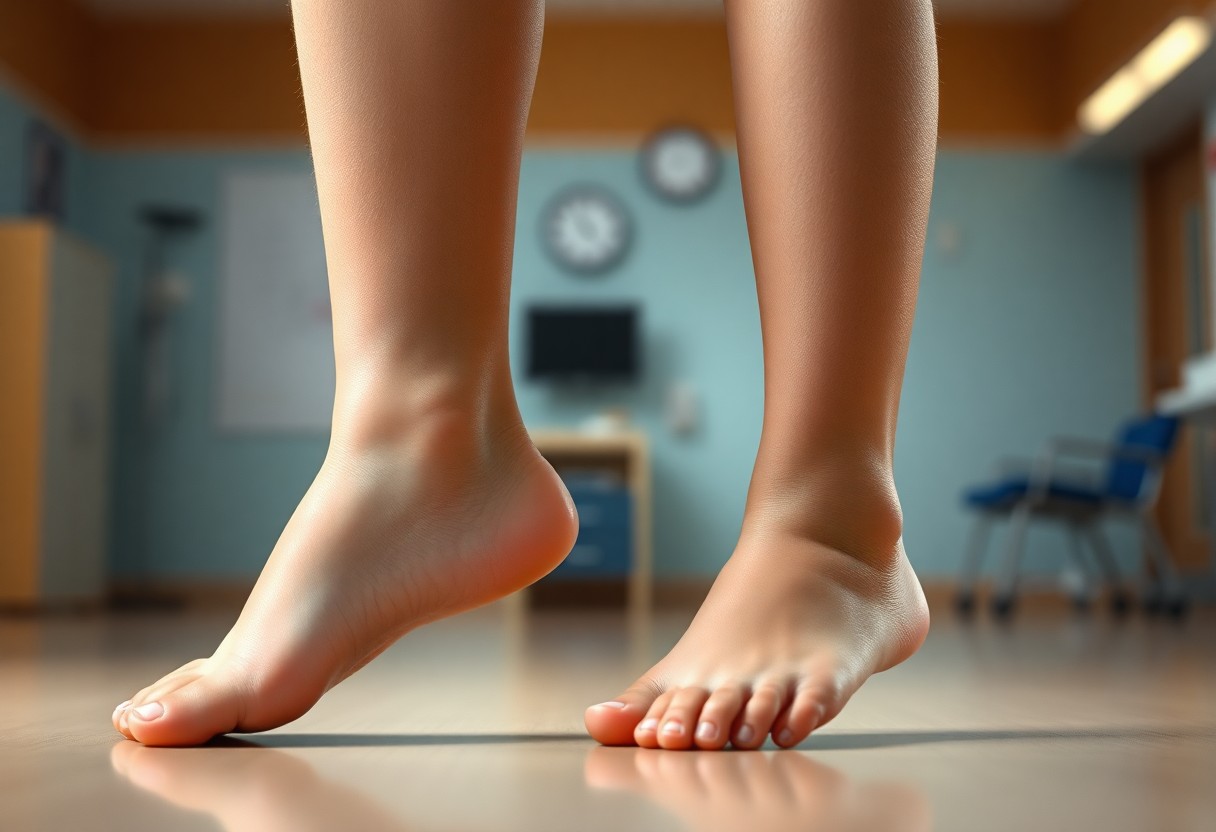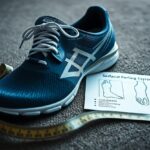
Engage in an enlightening exploration of the complex journey surrounding your child's foot development. Uncover how barefoot conditions can yield significant developmental advantages. It may come as a surprise that the shoes your child chooses to wear play a crucial role in shaping their foot arch formation and influencing their gait patterns. Numerous studies have illustrated that minimalist footwear and barefoot experiences can enhance the natural mechanics of the foot, potentially diminishing the chances of future musculoskeletal issues. By investigating the intricate relationship between footwear and pediatric foot development, you can make informed decisions that nurture your child's biomechanical health and overall physical well-being.
As we progress, we will delve deeper into essential elements of this topic:
Discover the Impact of Footwear Choices on Your Child's Foot Development
The type of footwear your child dons is critical in shaping their foot morphology and biomechanical development. The selection of footwear directly influences arch formation, toe alignment, and the overall structure of the foot. Research has shown that inappropriate footwear can lead to long-lasting musculoskeletal complications, with alarming statistics revealing that 59% of children experience fit-related issues with conventional shoes. In contrast, minimalist and barefoot-inspired designs offer promising alternatives that promote natural foot mechanics and support healthy developmental trajectories.
Harnessing the Advantages of Barefoot Conditions for Optimal Arch Morphology
Experiencing barefoot conditions actively encourages natural arch development by allowing unrestricted muscle activation. Studies emphasize that children who spend more time barefoot or in minimalist footwear exhibit a remarkable 23% increase in arch height compared to their peers who consistently wear shoes. Furthermore, dynamic pressure mapping research indicates a 31% reduction in midfoot loading, significantly lowering the risk of pediatric flat feet while encouraging optimal engagement of foot muscles during movement.
Examining Hallux Valgus: The Link Between Footwear and Structural Misalignment
Narrow and restrictive footwear can severely compress toe alignment, thereby increasing the risk of hallux valgus considerably. Approximately 75.5% of preschoolers wearing ill-fitting shoes exhibit lateral toe deviations exceeding 10 degrees. In comparative studies, barefoot populations maintain hallux angles that are 37% smaller, highlighting the importance of unrestricted toe movement to prevent structural misalignments and uphold healthy foot function.
Investigating the Mechanisms Behind Hallux Valgus Progression
Prolonged periods of shoe-induced toe compression result in a cascade of biomechanical challenges that jeopardise foot health. Narrow toe boxes compel lateral toe deviations, progressively altering the shape of metatarsophalangeal joints and endangering the natural architecture of the foot. Longitudinal studies reveal that children wearing shoes with a toe box allowance of less than 15mm experience accelerated progression of hallux valgus. Conversely, minimalist footwear designs featuring wider toe boxes can diminish the development of valgus angles by up to 29% over a year, thereby presenting a proactive strategy against structural foot deformities.
As we continue our examination, we will explore the mechanics of shoe design:
Unpacking the Fusion of Traditional and Modern Innovations in Shoe Design
Shoe design embodies a sophisticated integration of biomechanical engineering, anthropometric considerations, and cultural aesthetics. Modern footwear development merges cutting-edge material sciences with ergonomic principles, challenging conventional manufacturing methods. Researchers now utilise 3D scanning, pressure mapping, and finite element analysis to craft shoes that dynamically respond to human movement patterns, transcending static structural designs.
The Emergence of Minimalist Footwear: Embracing Natural Movement
Minimalist shoe designs prioritise biomechanical authenticity over mere aesthetic considerations. These shoes replicate barefoot mechanics by providing minimal cushioning, a zero heel-to-toe drop, and flexible materials that facilitate natural foot articulation. Consequently, your child's intrinsic musculature is more fully engaged, thereby enhancing proprioceptive feedback and fostering more efficient movement patterns that adhere to the evolutionary principles of biomechanics.
The Hidden Dangers of Conventional Shoes: Aesthetics at the Expense of Functionality
Traditional shoe designs frequently compromise foot health by prioritising visual appeal over functionality. Narrow toe boxes, rigid soles, and excessive cushioning disrupt the natural mechanics of the foot. This constriction can lead to long-term adaptations in the musculoskeletal system that adversely affect gait, balance, and overall lower extremity function.
Conventional shoes present significant developmental challenges by systematically restricting the natural movement of the foot. Narrow toe boxes compress digital structures, heightening the risk of hallux valgus and limiting toe splay capabilities. Additionally, rigid soles interrupt proprioceptive sensory feedback, potentially resulting in compensatory movement patterns. Prolonged confinement may weaken the intrinsic musculature of the foot, with studies indicating a reduction of up to 37% in muscle activation among chronically shod populations. Aesthetic design elements, including unnecessary arch supports and decorative features, often contradict optimal biomechanical requirements, transforming shoes from protective gear into potential developmental obstacles.
 Continuing our investigation of pediatric footwear:
Continuing our investigation of pediatric footwear:
Successfully Navigating the Pediatric Footwear Landscape
Choosing the right pediatric footwear requires a nuanced approach that balances biomechanical development, safety, and individual variability. Emerging research illustrates that shoe design profoundly impacts foot morphology, with material choices, structural support, and flexibility playing crucial roles in developmental outcomes. Manufacturers increasingly incorporate advanced biomechanical insights into their designs, utilising materials and principles that nurture natural foot mechanics while addressing the unique locomotor challenges faced by children.
Diabetic Footwear: Tailoring Solutions for Unique Challenges
Diabetic foot care necessitates specialised footwear interventions designed to alleviate pressure points and prevent ulceration. Innovative technologies, such as microcellular rubber and custom-moulded insoles, effectively redistribute plantar forces, thereby minimising the risks of neuropathic injuries. Cutting-edge designs now incorporate moisture-wicking materials, antimicrobial treatments, and pressure-mapping technologies, creating a protective environment for vulnerable feet.
Striking a Balance Between Safety and Style in Children's Footwear
Modern designs in pediatric footwear have successfully integrated safety features with aesthetic appeal, challenging traditional compromises between protection and visual attractiveness. Lightweight and flexible materials facilitate the creation of shoes that support natural foot development while retaining contemporary design aesthetics. Manufacturers are leveraging advanced polymer technologies and ergonomic modelling to produce footwear that meets both functional and stylistic demands.
A Comprehensive Approach to Children’s Footwear Design
Creating effective children’s shoes necessitates a multidisciplinary strategy that marries podiatric research, material science, and developmental psychology. Biomechanical studies indicate that shoe flexibility, toe box width, and sole composition significantly influence muscle development and proprioceptive feedback. Advanced computational modelling allows designers to simulate foot mechanics, crafting shoes that adapt to growing feet while minimising potential developmental disruptions. Innovative brands are collaborating with pediatric orthopedic specialists to produce footwear that supports natural foot morphology, incorporating features such as adjustable widths, breathable materials, and dynamic support structures.
 Continuing with effective strategies for pediatric footwear:
Continuing with effective strategies for pediatric footwear:
Implementing Strategies for a Successful Transition to Natural Footwear
Successfully navigating the complexities of pediatric foot development requires a thoughtful approach that harmonizes biomechanical insights with practical implementation strategies. Gradual adaptation protocols provide scientifically validated pathways for transitioning children from conventional footwear to more natural movement practices. By systematically introducing children to minimalist designs and barefoot conditions, parents and healthcare providers can mitigate potential risks while fostering optimal muscle development and proprioceptive engagement in their children.
Implementing Phased Adaptation for Enhanced Foot Health
Transitioning your child’s footwear necessitates a structured methodology that respects individual developmental trajectories. Incremental exposure strategies advocate progressively increasing the duration of barefoot or minimalist shoe usage, commencing with brief 30-minute sessions and gradually extending to all-day wear. Complementary exercises aimed at strengthening intrinsic foot muscles, such as toe-spreading activities and balance challenges, can significantly expedite neuromuscular adaptation and support natural arch formation.
Overcoming Cultural Barriers and Socioeconomic Influences in Footwear Choices
The adoption of minimalist footwear often encounters considerable cultural and economic barriers, with urban populations exhibiting 42% lower implementation rates compared to their rural counterparts. Aesthetic preferences and traditional shoe design expectations generate substantial resistance to alternative foot development approaches, thereby limiting the widespread acceptance of evidence-based interventions.
Socioeconomic factors greatly influence pediatric foot health interventions, with lower-income communities facing restricted access to specialised footwear and biomechanical education. Multilingual educational campaigns targeting diverse demographic groups have yielded promising results, enhancing parental understanding and compliance by 58%. Complex barriers to optimal foot development strategies arise from cultural shoe traditions, economic constraints, and limited healthcare access. Research indicates that culturally sensitive, comprehensive approaches addressing economic disparities and traditional beliefs can significantly improve the effectiveness of interventions across various socioeconomic contexts.
 Continuing our exploration of future directions in pediatric foot health:
Continuing our exploration of future directions in pediatric foot health:
Envisioning Future Directions in Pediatric Orthopaedics
Emerging research trends in pediatric foot development necessitate interdisciplinary collaboration, merging biomechanical insights, innovations in material science, and advancements in imaging technologies. Precision orthopedic interventions are anticipated to leverage machine learning algorithms to predict individual foot morphology progression, facilitating personalised footwear recommendations that optimise developmental outcomes and mitigate potential musculoskeletal complications.
Advocating for Policy Changes to Enhance Footwear Standards
The current regulatory frameworks inadequately address the biomechanical needs of pediatric foot development, with existing shoe standards failing to account for dynamic growth considerations. Comprehensive policy redesign is vital to mandate flexible sole technologies, precise sizing protocols, and anthropometric measurements that accommodate individual developmental variations, ensuring that footwear supports natural foot architecture during critical growth phases.
Implementing Longitudinal Studies to Assess Foot Development Outcomes
Systematic long-term research is crucial, necessitating multi-decade tracking of cohorts subjected to various footwear interventions. Standardised assessment protocols will empower researchers to correlate childhood foot mechanics with adult musculoskeletal health, providing invaluable insights into developmental trajectories and potential preventative strategies.
Developing Comprehensive Longitudinal Research Methodologies
Robust longitudinal studies require meticulous methodological approaches, including prospective cohort designs featuring a minimum of 15 years of follow-up. Researchers must integrate cutting-edge imaging technologies such as 3D foot scanning, dynamic gait analysis, and genetic profiling to capture intricate developmental patterns. Multidisciplinary teams comprising podiatrists, biomechanical engineers, and orthopedic specialists will collaborate to create comprehensive assessment frameworks, tracking aspects such as arch morphology, muscle activation patterns, and long-term musculoskeletal implications across diverse pediatric populations.
To conclude our discussion:
Essential Takeaways on the Development of Children's Feet
Reflecting on pediatric foot development, it is clear that barefoot conditions offer substantial advantages in terms of both arch morphology and gait patterns. Your understanding of how minimalist footwear can positively influence foot mechanics has deepened, revealing the intricate connections between shoe design and natural foot development. By prioritising unrestricted foot movement and grasping the nuances of biomechanics, you can make informed decisions that advocate for healthy pediatric foot growth and enduring musculoskeletal well-being.
The Article Pediatric Foot Development in Barefoot and Shod Conditions: Longitudinal Impacts on Arch Morphology and Gait Patterns first appeared on My Shoes Finder
The Article Pediatric Foot Development: Effects of Barefoot vs. Shod Conditions Was Found On https://limitsofstrategy.com







